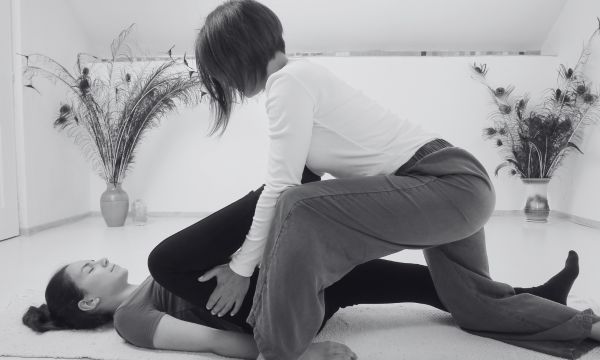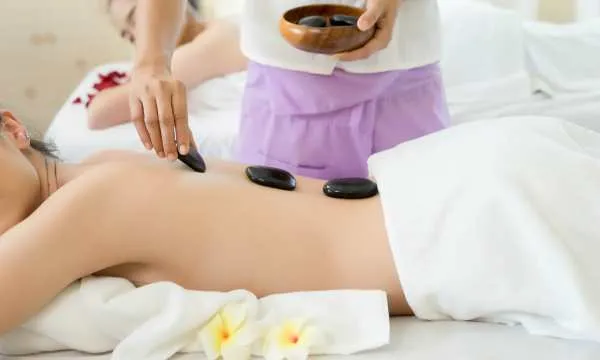Shiatsu is a form of massage therapy that originated in Japan. It involves applying pressure to specific points on the body to promote relaxation and healing.
Ad
Shiatsu is based on the principles of traditional Chinese medicine, which holds that the body has a network of energy channels, or meridians, that can become blocked or imbalanced, leading to pain, illness, and other health problems.
Massage therapists can benefit greatly from learning the principles and techniques of shiatsu. By incorporating shiatsu into their practice, they can offer their clients a more holistic and comprehensive approach to healing.
Ad
Shiatsu can help to alleviate a wide range of physical and emotional issues, including chronic pain, stress, anxiety, and depression. With its emphasis on the connection between mind, body, and spirit, shiatsu can also help clients to achieve a greater sense of balance and well-being.
Fundamentals of Shiatsu
Historical Origins
Shiatsu is a Japanese massage technique that has its roots in traditional Chinese medicine. It was developed in Japan in the early 20th century by Tokujiro Namikoshi, who combined his knowledge of Western anatomy and physiology with traditional Japanese massage techniques. Shiatsu is now widely practiced around the world as a form of alternative therapy.
Ad
Key Concepts
Shiatsu works on the principle that the body has a network of energy channels, known as meridians, which run throughout the body. These meridians are believed to be connected to the body’s organs and systems, and when they become blocked or imbalanced, it can lead to physical and emotional problems.
Shiatsu practitioners use a combination of pressure, stretching, and joint manipulation to stimulate the body’s natural healing processes and restore balance to the meridians. They may also incorporate other techniques, such as moxibustion (the burning of herbs to stimulate the meridians) and cupping (the use of suction cups to relieve tension).
Yin and Yang Theory
Shiatsu is based on the principles of yin and yang, which are fundamental concepts in Chinese philosophy. Yin and yang are opposite forces that are interconnected and interdependent, and they are believed to be present in all aspects of life, including the body.
In shiatsu, the goal is to balance the yin and yang energies in the body. Yin is associated with qualities such as coolness, darkness, and rest, while yang is associated with warmth, light, and activity. When these energies are in balance, the body is healthy and functioning properly. When they are out of balance, it can lead to illness and disease.
Shiatsu practitioners use a variety of techniques to balance the yin and yang energies in the body, including pressure points, stretching, and joint manipulation. They may also recommend dietary and lifestyle changes to support overall health and wellbeing.
Techniques and Methodologies
Basic Hand Movements
Shiatsu massage therapists use a variety of hand movements to apply pressure to the body. These movements include pressing, kneading, tapping, and stretching.
The therapist may use their palms, fingers, thumbs, or elbows to apply pressure depending on the area being massaged and the desired effect. The pressure applied can range from light to deep, depending on the client’s needs and preferences.
Pressure Points and Meridians
Shiatsu massage therapy is based on the concept of pressure points and meridians. Pressure points are specific areas on the body where pressure can be applied to relieve tension and pain.
Meridians are pathways in the body through which energy flows. By applying pressure to specific points along these pathways, the therapist can help to balance the flow of energy and promote healing.
Application of Techniques
Shiatsu massage therapy is typically performed on a mat or futon on the floor, with the client fully clothed. The therapist will begin by assessing the client’s needs and preferences, and then use a combination of hand movements, pressure points, and stretching to provide a customized massage experience.

Application-of-Techniques – Source(Canva)
The therapist may also incorporate other techniques such as aromatherapy or heat therapy to enhance the massage experience.
Overall, shiatsu massage therapy can be a powerful tool for promoting relaxation, reducing stress, and relieving pain and tension in the body. By using a combination of hand movements, pressure points, and stretching, massage therapists can provide a customized massage experience that meets the unique needs and preferences of each client.
Practical Applications
Therapeutic Effects
Shiatsu massage therapy has been shown to have a number of therapeutic effects on clients. For example, it can help to reduce stress and anxiety, improve circulation, and relieve muscle tension and pain. Additionally, shiatsu can help to improve the immune system, which can lead to improved overall health and wellbeing.
Treatment Protocols
When performing shiatsu massage therapy, massage therapists should follow specific treatment protocols to ensure that they are providing the best possible care for their clients. These protocols may include specific techniques, such as acupressure, kneading, and stretching, as well as guidelines for session length and frequency.
Client Assessment
Before beginning a shiatsu massage therapy session, massage therapists should perform a thorough client assessment to determine the client’s specific needs and any underlying health conditions. This assessment may include a review of the client’s medical history, a physical examination, and a discussion of the client’s goals for the session.
Overall, shiatsu massage therapy can be a highly effective form of massage therapy for clients who are looking to improve their overall health and wellbeing.
By following specific treatment protocols and performing thorough client assessments, massage therapists can ensure that they are providing the best possible care for their clients.
Professional Development
Massage therapists who incorporate Shiatsu techniques into their practice can benefit from ongoing professional development. This can include training in ethics and communication, building a practice, and continuing education.
Ethics and Communication
Effective communication is essential for building trust and rapport with clients. Shiatsu practitioners should be skilled in active listening and be able to communicate clearly and respectfully with their clients. They should also be knowledgeable about ethical guidelines and standards of practice in their field.
Building a Practice
Building a successful Shiatsu practice requires a combination of marketing, networking, and business skills. Massage therapists can benefit from developing a clear brand identity, creating a professional website, and leveraging social media to connect with potential clients.
They should also be knowledgeable about legal and financial considerations related to running a small business.
Continuing Education
Continuing education is essential for massage therapists who want to stay up-to-date with the latest research and techniques in Shiatsu and related fields.
This can include attending workshops and conferences, participating in online courses, and seeking out mentorship opportunities. By continuing to learn and grow, massage therapists can provide the highest quality care to their clients and build a successful and fulfilling career.


